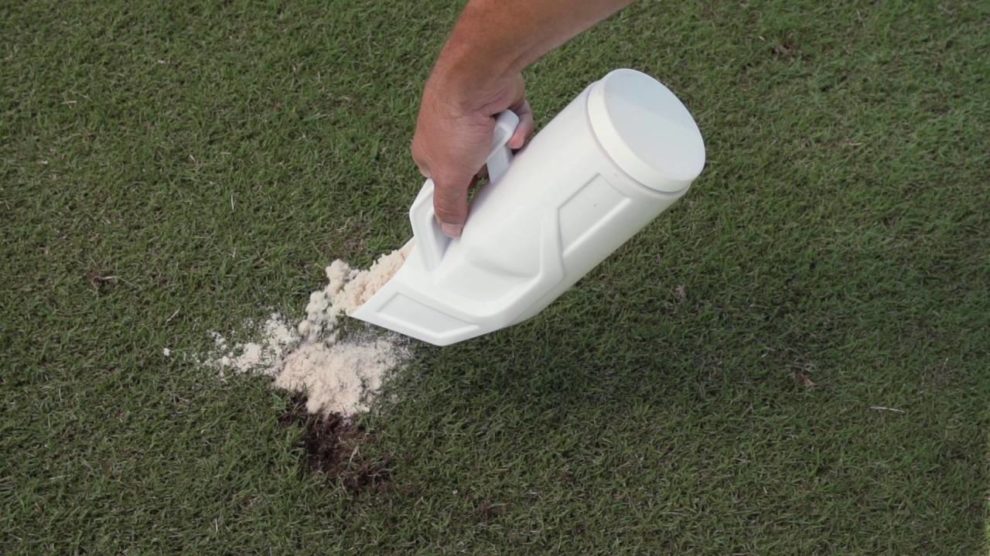If you've ever driven in a golf cart before, you've no doubt seen one or two clear or white plastic bottles on the back side of a cart. Maybe you've seen what looks to be a cooler but it turns out to have a scooper and a mix in it instead.
These containers hold something very important to golf-course maintenance, and courses rely on golfers to help them use it.
What is in the bottles on the side of a golf cart?
Those plastic bottles on the sides of golf carts (or sometimes in what looks like a cooler, or in a smaller tube for walking golfers) contain sand and seed mix. The divot mix is vital for helping keep up the golf course.
What is in sand and seed mix?
As the name implies, bottles always contain sand. At lots of golf courses, the bottle contains only sand. At many golf courses, though, the bottles contain sand and seed, particularly at golf courses where the fairway grass is Bentgrass or another cool-weather grass. Some facilities use a seed-and-soil mixture as well. In some cases, there's also some small amount of fertilizer in the bottle. It all comes down to the agronomy staff at a club or a facility to determine what works best for their grass and soil conditions.
What does the sand and seed mix do?
Golfers, of course, take up a lot of divots when they play golf. Divots are really exposed bare ground that creates an opportunity for weeds to take hold or for poor playing conditions for golfers who follow.
The sand in the mixture allows divots to heal by providing a growing medium for the surrounding turf to spread into. Many courses prefer to use only sand because seed can spread to undesired areas, and golfers often mistakenly use the mix for divots taken in the rough. The mixture isn't for that, and the well-intentioned golfer is potentially doing damage to the course by creating the potential for grass to grow that is difficult to manage as rough.
In a short period of time after the divot is filled, the grass will either spread into the divot or the new seed will take hold and start to grow there.

